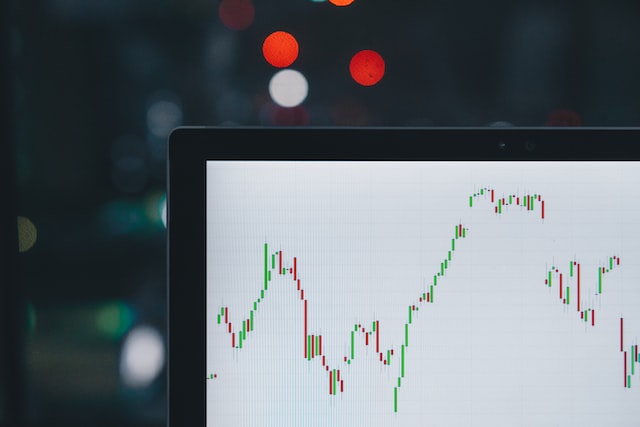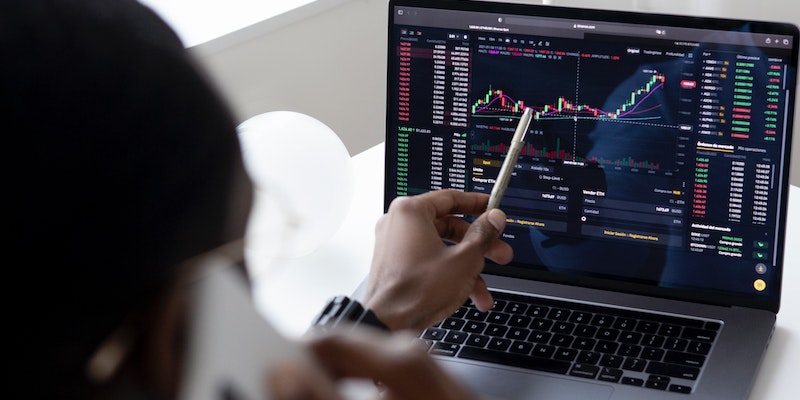What is a Leveraged ETF?
Triston Martin
Nov 07, 2022
Leverage entails debts and financial derivatives to maximize an investment's returns. This means that both prospective gains and losses can increase. Purchasing stocks on margin is a typical form of leveraged stock investment. In contrast to a standard ETF, leveraged ETF products aim to achieve 2x or 3x the returns of the sector or index they monitor and already include leverage. Additionally, leveraged ETFs frequently have higher expense ratios than standard ETFs.
With every leveraged investment vehicle, investors face significant risks. However, because they use additional leverage to generate more significant returns, Triple-leveraged exchange-traded funds (ETFs) (3x) are highly risky. Although leveraged ETFs may be advantageous for short-term trading, they come with substantial risks over the long term.
Understanding Triple-leveraged ETFs

Triple-leveraged (3x) ETFs follow many asset classes, including equities, bonds, and commodities futures, similar to other leveraged ETFs. 3x ETFs use even more leverage to increase returns by three times those of their respective underlying indices on a daily or monthly basis. The purpose of 3x ETFs is to profit from the swift daily fluctuations in the financial markets. However, for long-term investment, the following risks develop.
Compounding and Volatility: Compounding results from applying gains and losses to a principal amount of cash over time. It is a definite risk for 3x ETFs. Compounding's benefits can frequently produce immediate, transient improvements. It can also result in long-term losses in volatile markets. A leveraged fund's volatility might quickly result in losses for an investment.
Derivatives: To monitor the underlying benchmark, 3x ETFs use derivatives like futures contracts, swaps, or options. Investment products known as derivatives involve agreements between parties. The price of the underlying financial security determines its value. The "market," "liquidity," "counterparty," and "interconnection" are the risks involved in trading derivatives. Investors have to face these risks when they buy in 3x ETFs.
High Expense Ratio: Triple-leveraged ETFs are not appealing to long-term investors because of their extremely high expense ratios. 3x ETFs frequently charge 1% annually. In contrast, common stock market index ETFs often have tiny expense ratios of less than 0.05%. Over 30 years, a 1% annual loss equates to a loss of more than 26%. Even if the leveraged ETF caught up to the index, fees would cause it to lose significantly over the long term.
Daily Reset: To maintain a stable leverage ratio, most leveraged ETFs reset daily to their underlying benchmark index. Traditional margin accounts do not operate that way, and the constant leverage trap is the outcome of this process of resetting.
Buying and Holding a Triple-leveraged ETF like TQQQ

2022 YTD Performance: -75.5%
Historical Performance (Over 5 Years annually): 16.5%
Expense Ratio: 0.95%
AUM: $11 Billion
In addition to asset management fees and frictional costs, including trading fees, and custody fees, leveraged ETFs incur interest costs on the debt utilized to produce the actual leverage. This implies that interest expenditure, or its effective counterpart, depreciates the portfolio's value at all times.
A 3x leveraged ETF, the ProShares UltraPro QQQ is more often known by its ticker, TQQQ. TQQQ was formed more as a trading vehicle than an investment vehicle.
It uses debt and more advanced trading derivatives to quadruple the daily returns of the Nasdaq 100. For investors, a 1% increase in the index means a 3% gain and a 1% decrease would result in a 3% loss. TQQQ is hence a very speculative, risky instrument. Founded in 2010, TQQQ has an AUM of around $11 billion as of March 2021.
ProShares claims that the gross expense ratio of TQQQ is greater at 1.01%, and its effective expense ratio is only 0.95%. This difference can signify a temporary fee break to attract more investors.
In addition to the expense ratio that pays the fund company for providing the ETF, there are additional, unreported costs. Leveraged ETFs pay the expenses of the derivative trading that generates their excess returns and the costs of daily portfolio rebalancing. TQQQ also bear the costs of maintaining the substantial amount of low-yielding, very short-term bonds they hold to provide the money needed for all their purchasing and selling.
The ETF's shares will lose money in a sideways market, which is made worse by the fact that the portfolio rebalances daily. Even if the leveraged ETFs display a profit, you can see substantial losses because these funds reset daily.
Due to its high levels of volatility and severe downside risk for long-term investors, TQQQ is better suited for intraday trading methods than for long-term investments.
Who should consider Leveraged ETFs?
So, for whom are these leveraged ETFs intended? What categories of individuals or companies should think about buying or selling them? The solution becomes apparent when you realize they aren't intended for long-term investment.
Owning stock in businesses, receiving dividends, or lending money and receiving interest income is investing. It is essential for the economy to run. When purchasing stocks, ETFs, or other investments, investors frequently employ long-term methods and have long-term objectives in mind.
A 300% leverage on a stock market benchmark (like the Nasdaq-100) with a daily reset is a means to bet without taking a chance on the risks associated with using margin debt directly.
The long and short sides have unique ticker symbols, so you may bet on whether they will increase or decrease.
Leveraged ETFs are only for wealthy investors who can afford to take on a significant amount of risk and are ready to wager on whether equities will rise or fall at any particular time.
Bottom Line
Only sophisticated investors should purchase TQQQ. If you intend to invest in TQQQ, you should have a thorough understanding of leverage and derivatives and be ready for the prospect of a significant loss of principle. Due to its high levels of volatility and severe downside risk for long-term investors, TQQQ is better suited for intraday trading methods than for long-term investments.







